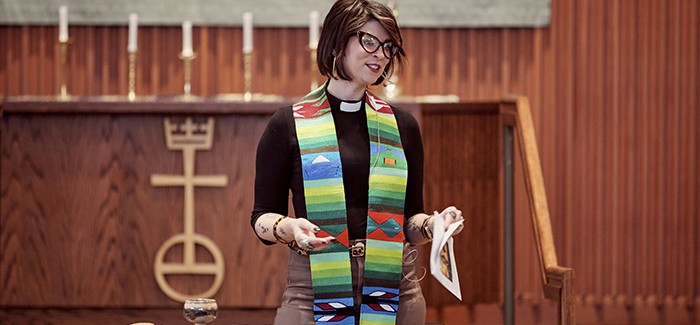The COVID-19 pandemic has had a differential impact on women. In particular, working mothers have faced a greater burden of child care and home schooling than men and have ended up leaving the work force in significantly greater numbers than men.
Women perform three times the hours of unpaid care work that men do. Women in academia are falling behind their colleagues in research productivity, including submitting fewer articles to peer-reviewed journals. A majority of frontline health workers are women, and so they have been at greater risk for contracting the virus. Instances of domestic violence have increased as pressures on men have been exacerbated by the pandemic, and people have been locked down in their homes for extended periods of time.
Given the stark impact of the pandemic on women, I decided to ask women pastors what effects the pandemic is having on them. Their answers, unsurprisingly, to a great extent reflect the experiences of other professional women, and they are uniquely inflected by their role as pastors during this time of crisis.
Given the stark impact of the pandemic on women, I decided to ask women pastors what effects the pandemic is having on them.
While some of the concerns raised by the pandemic overlap with those of men pastors as well, gender still shapes congregational expectations and pastors’ behaviors. Because gender is so deeply ingrained in individual psyches and institutional structures, a crisis like a pandemic makes falling back into familiar patterns easy, even in progressive families and churches.
For example, congregations may expect women pastors to be more nurturing, especially during a pandemic, or men in the congregation may feel more empowered to challenge women pastors’ decision-making abilities. Home can be especially fraught, especially when suddenly children are at home all day every day.
Pastoral duties
Most of the women with whom I spoke felt the pandemic had intensified their pastoral work as congregants have needed more support and pastors have had to find new ways to do church.
A number noted how they have missed in-person contact.
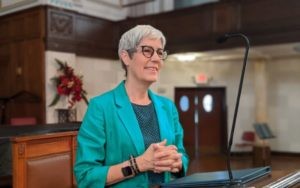
Mimi Walker
Mimi Walker, pastor of the Church at Ponce and Highland in Atlanta, said: “The greatest struggle for me has been changing my style and focus of ministry. Pastoral ministry is where my spirit is fed, so not being able to visit church members, hold the new babies in our congregation, or meet with visitors over lunch has been a deep loss. … I miss the Sunday morning hugs that provide that desperately needed physical touch that sustains the human soul.”
Cheryl Kimble, pastor of the Church @ Highland Park in Austin, Texas, said: “I would say the biggest thing for me is that I’m a relational pastor, and not being able to see people who are hurting, going through illness, even suffering loss, and I can’t be there. I can’t lay my hands on people and pray for them. I can’t easily even have funeral services for those we’ve lost.”
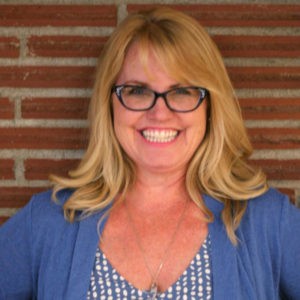
Jen Stuart
Jen Stuart, pastor of Bend Church United Methodist in Bend, Ore., said that early on she and her staff of mostly women decided to keep a healthy pace rather than comparing themselves to busier churches that continued with more activities. She added: “I think what we’ve done really well is set up small groups and I have a Monday through Friday devotion time on our Facebook page where we name three things we are grateful for, and then read together Richard Rohr’s daily meditation. This work has been life changing for me, and at least 75 people tune in to it at some point during the day.”
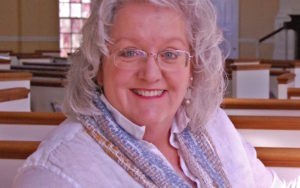
Amy Mears
Amy Mears, co-pastor of Glendale Baptist Church in Nashville, Tenn., worries about how pastors are thinking about providing “long-term trauma-related care for chaplains and physicians and nurses and respiratory therapists and other caregivers.” She explained: “EMTs being told to triage their calls and only transport those who look like they can be helped? Hospital personnel who are rationing ventilators and supplies? Watching people die alone in a glass cubicle when you are trained in the incarnational ministry of presence? How are those people going to regain their moral and spiritual and psychological and emotional and social footing when this shifts back to a more sustainable life? Maybe there are male pastors looking at their parishioners and having these conversations, but I haven’t been a part of any such conversations that included men.”

Danielle Bridgeforth
Danielle Bridgeforth, pastor of the Church at Clarendon in Arlington, Va., talked about her own struggles in dealing with the trauma of the pandemic. She explained: “One of the biggest challenges of the pandemic has been dealing with the brokenness, heartache and trauma that is being experienced by others. As a nurturer, it has been difficult for me to consistently decompress and turn off my mind. I am hurting along with my congregation and community. Nevertheless, I must learn to take breaks, step back and refocus on God, who is with us in the midst of everything we are experiencing.”
Some pastors noted the quickness of some of the men in their churches to challenge and criticize. One pastor explained: “The pandemic has frayed people’s nerves, and I have found that some people are really crabby, and, early on, fast to criticize and complain. Maybe I am paranoid, but it seemed those people who would complain, gripe or explode at me, would not so easily do it to a man.” She pointed out that her male associate pastor has not gotten the same kinds of responses. She continued, “It could be that it is because I am the pastor, but I think there is a feeling of ‘freedom’ to complain at a woman.”
Zoom church
For most of these women pastors, the switch to Zoom church and livestreaming has been a significant change.

Cheryl Kimble
Cheryl Kimble mentioned the “huge learning curve of trying to do services differently. Trying to figure out livestreaming, trying to come up with ways to make people feel connected when we’re apart.”
Mimi Walker reflected that her younger staff members were extremely helpful with “that steep learning curve of shifting everything online and dealing with the technical glitches every week.”
One pastor noted that some of the men in her congregation were quick to complain about the Zoom rollout. She said, “At first it was men who wanted perfection in the way we rolled out Zoom, etc., but they eventually were humbled and quit because they started making mistakes and found it wasn’t so easy. Now it seems to be other people — a few women, but not so direct.”
Both Kimble and Walker talked about the difficulties of preaching to a camera. “I enjoy the phone calls and Zoom meetings,” Walker said, “but it is not the same. And preaching to a camera has been an awkward adjustment. At first, I taped a picture on top of the camera to feel like I was talking to someone.”
Kimble added: “Preaching to a camera is just hard. It’s really hard to put time and energy into a sermon only to look at a camera and preach it. The desire to see faces, even to watch those that fall asleep each week, but also to see the smiles, the head shakes and even the laughter if I say something funny. I have to admit that when we started 10 months ago, I didn’t think we would be apart for Easter, and now we’re entering into another Lenten season, and I’m saddened that we might be apart for yet another Easter.”
Nonetheless, Walker pointed to some positive impacts of Zoom church: “The upside of these changes has been building new relationships with people who would not have driven to the church building, who now have found us online. And some seniors with health issues that had kept them from attending are able to participate again, having learned how to join us online.”
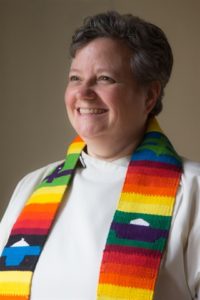
Linda Tucker
Linda Tucker, pastor of First United Methodist Church in Corvallis, Ore., explained how her church shifted its use of its facilities. She said the church “has responded to the pandemic by closing our worship space but opening our living space. We turned the temporary women’s shelter into a year-round, 24-7 shelter and added four micro shelters. We have beds, food and shelter for 25 women. As so many of our long-standing volunteers were in the most vulnerable age if exposed to COVID-19, we encouraged younger folks to volunteer. The pandemic put women on the street in even more stressful situations.”
Single women
Pastors who are single women noted the loneliness they’ve faced during the lockdown, and research suggests that isolation takes an especially high toll on single women.

Danielle Glaze
Danielle Glaze, pastor of First Baptist Church of Teachey, N.C., said: “The isolation and loneliness has been intense in addition to not having someone to support at home.” Similarly, Amy Mears said that because her children are now college-aged, she basically lives alone and faces loneliness during the pandemic.
Danielle Bridgeforth pointed out the temptation for single pastors to work all the time. She said: “I have realized that, especially as a single woman, I lacked a healthy work-life balance before the pandemic. I probably knew this already, but this season has made it more obvious to me. So, the pandemic has required me to put in place more boundaries and more accountability to help me stay aligned.”
Mothers with school-aged children
The most significant issue of gender for women pastors during the pandemic is parenting young children. A number reported that during the pandemic, heterosexual families had fallen into traditional gender roles.
One who is a co-pastor with her husband explained, “So I tend to carry more of the load of the domestic which in the pandemic turned up significantly working from home — and naturally pulled time away from pastoring. It has been hard to feel that constant pull between the two and feeling like I am constantly over-performing and yet underperforming at the same time with both of them.”
Two pastors explained that the perceived “flexibility” of their job as pastor meant they became more responsible for child care and work in the home during the pandemic.
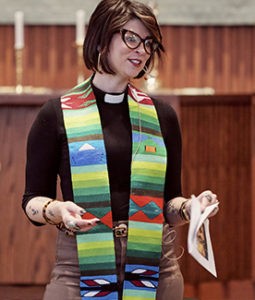
Jen Butler
Jen Butler, pastor of First Congregational United Church of Christ in Corvallis, Ore., said that because her husband’s company never sent employees to work from home, she became the full-time parent while continuing her full-time work as pastor. She noted: “Once the initial couple of weeks had passed and the world transitioned to Zoom meetings and online school, I (along with the rest of working mothers around the world) was trying to do all the things. Get groceries delivered, lead meetings, do online school and keep my child alive at the same time.”
She said things have improved as time has passed. “My child now comes to work with me and has a tutor, which makes things better but still means I am parenting while working. I am still the person who does the grocery shopping and the doctor’s appointments and manages the household because my job is ‘flexible.’”
Another pastor said: “The ways in which this pandemic has affected my job are endless. The balance of work and home is a common struggle for women.” She said her three-person family is all online during the day, each in a different room in their home. “It was not evident at first how the isolation was affecting my son’s schoolwork. Eventually we became aware of how lost he was. He had been lying to us for months that he was on top of his work. We were too busy to double check. I changed my schedule to start work when he started online school so that I could make sure he was online. Yes, my husband could have made changes to his schedule, but we decided I had more flexibility and therefore could do this more consistently.”

Aurelia Pratt
Aurelia Pratt, pastor of Peace of Christ Church in Round Rock, Texas, acknowledged that her primary challenge during the pandemic has been balancing being a pastor and being a parent. She said: “As is the case with many working women, I am the primary caregiver to my young daughter, and the pandemic totally upended my child care situation. I’m currently operating with less than half of my usual child care (and for the first five months of the quarantine I had no child care). I’ve been getting up at the break of dawn and using nap times to work, and I am busy most nights with meetings I had to push to evening hours. Because this is my current reality, I’ve had to be intentional about creating a rhythm that works for me and my family, despite the difficulties.”
The issue of child care during the pandemic, however, also has been a concern in LGBTQ families.
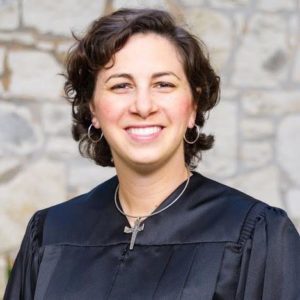
Meg Vail
Meg Vail, pastor of First Presbyterian Church of Logan, Utah, noted: “My gendered experience of the pandemic has a lot to do with my motherhood, which is inherently a gendered experience, I guess you could say. We found out we were expecting in late November 2019, four months before the pandemic shutdown. After touring day cares in the early winter, we suddenly realized we were going to need to find a way to keep our child home safely. … In recent months, I’ve often felt I’ve had to choose between a desire for excellence as a pastor and excellence as a mother. I was asked to speak publicly on several occasions and, had I not been the mother of a vulnerable infant, I might have said yes. I found myself without child care one recent morning, unexpectedly, and decided I shouldn’t pass up an opportunity to meet with (and develop a ministry relationship with) a new leader in our region, so I spoke up about bringing my son with me.”
Amy Mears explained that in her Baptist women pastors’ group, participants worry about the members with young children at home. “They are trying to dredge up creativity to plan Lenten worship with a 2-year-old under the table eating Cheerios. There is no physical space and no break in time. In the case of my group, at least, none of them is in a situation where another parent is a stay-at-home, full-time caregiver for kids. The other parent is a hospital chaplain, out of the house all week, or pastor of another church doing their own worship planning and sermon writing and budget making. There is no vacation travel, no grandparents offering a parenting break, and if, you take a day off, it’s just another 24 hours of mother-pastor-schoolteacher.”

Libby Grammer
Libby Grammer, pastor of First Baptist Church of Martinsville, Va., was a new pastor and a new mom just before the pandemic struck. She had been busy upgrading the church website and acquiring a camera to record and post worship services in late 2019, and she’d been focusing her energy on the church’s early learning center, all of which have paid off. She’s been able to help church members stay connected, and the center has stayed open throughout the pandemic, caring from almost 100 children of essential personnel, including her own.
Other forms of gendered labor also appeared in these pastors’ comments. One noted the increased burdens for middle-aged women caring for aging parents. Another, who has no children, observed that even though her husband is retired, she still does more work in the home. “While I’ve been home,” she remarked, “it’s been hard to have boundaries. I went from doing church work, calls and Zooms to housework to church again, and worked on church a lot at night. It was really challenging at Christmas because I had all the shopping, mailing and decorating. It’s hard to shed those stereotypes and truly share the load.”
Professional women — and women pastors are no exception — face many gendered challenges in the workplace and home, and the pandemic has exacerbated these struggles. Nonetheless, these pastors continue the work of ministering to congregations, even while homeschooling, vacuuming and writing the next Zoom sermon.
Susan M. Shaw is professor of women, gender and sexuality studies at Oregon State University in Corvallis, Ore. She also is an ordained Baptist minister and holds master’s and doctoral degrees from Southern Baptist Theological Seminary. Her most recent book is Intersectional Theology: An Introductory Guide, co-authored with Grace Ji-Sun Kim.

